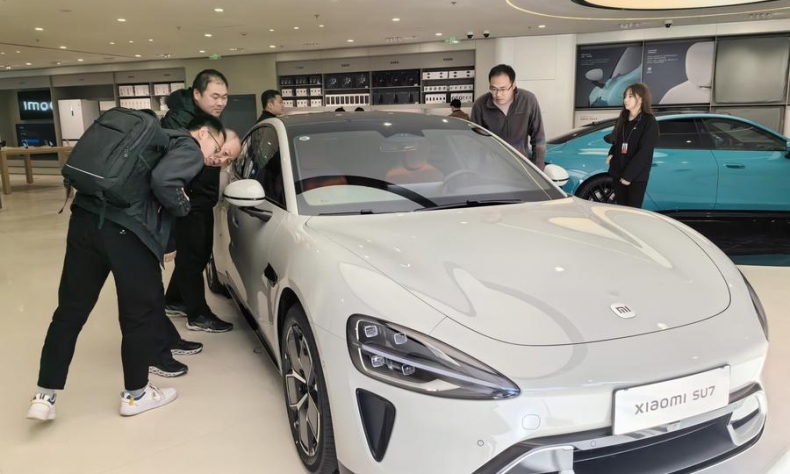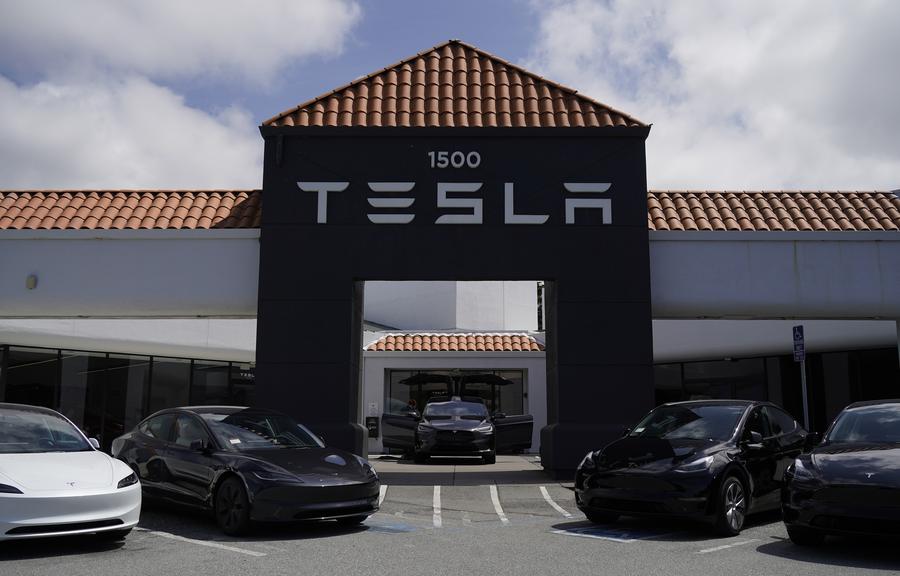The Lesson from the Catalyst Effect

A market without sufficient competition is unlikely to foster dynamic companies.
Many Chinese consumers hesitated to purchase electric vehicles (EVs) in the first quarter of 2025, due to concerns about frequent product upgrades and continuing price reductions: Developments such as these have been leaving many with buyer’s remorse just weeks or months after purchase.
Among these regretful purchasers are some of those who bought Xiaomi EVs in 2024. In March 2024, Chinese consumer electronics maker Xiaomi launched its first EV, the SU7, which quickly gained popularity among young consumers with its sleek design and an attractive starting price of 219,000 yuan (about $30,000). In October 2024, the company began pre-selling the high-performance SU7 Ultra with an initial pre-sale price of 814,900 yuan (approximately $112,000). When the model, which surpassed the Porsche Taycan Turbo GT as the fastest mass-produced car officially recognized at the track, was launched on February 27 this year, the price had been reduced to just 529,900 yuan (around $71,000).
China’s EV market is in a state of exceptionally fierce competition. In addition to the American brand Tesla and domestic players such as BYD and NIO, an increasing number of traditional automakers, and even consumer electronics giants like Xiaomi and Huawei, which are new to the automotive business, are all vying for a share of this booming sector. According to data released by the China Association of Automobile Manufacturers on January 13, EV sales in China reached 12.87 million units in 2024, a 35.5-percent increase year on year. EVs accounted for 40.9 percent of total new car sales. In contrast, EV sales surpassed 1.3 million units in the U.S. market last year, a 7.3-percent annual increase but only one 10th of China’s total sales.
It is an undeniable fact that China is leading the global EV market. Many American media outlets have also taken notice of the booming state of China’s EV market, raising the question: How is it that while U.S. tech giant Apple spent nearly a decade and invested $10 billion before abandoning its EV plan last year, China’s Xiaomi achieved the development and launch of its EVs in just three years with an investment of less than $2 billion, emerging as a dark horse in the field.

American experts attribute the success of China’s EVs to its well-developed industrial supply chain, strong policy support and vast consumer market of 1.4 billion people. These conclusions are valid, but many in the U.S. overlook a key point: At a critical moment in the development of China’s EV industry, the Chinese Government made a strategic decision to introduce Tesla as a catalyst. This move compelled Chinese companies to compete with the world’s leading EV manufacturers, sparking innovation within Chinese firms and marking a turning point in the EV sector.
In June 2017, the Shanghai Municipal Government signed an agreement with Tesla to build its first factory in China, offering 86 hectares of land at a rental rate far below market value and allowing Tesla to maintain 100-percent ownership. By the end of 2019, with the completion and operation of Tesla’s Shanghai Gigafactory, the production costs of Tesla vehicles dropped dramatically, and production capacity saw a substantial increase. By 2024, the Shanghai factory had delivered over 916,000 EVs, accounting for half of Tesla’s global deliveries.
When the price of the Tesla Model 3 in the Chinese market dropped below $30,000, it marked the toughest moment for Chinese EV manufacturers. To survive the competition, Chinese companies had no choice but to accelerate technological innovation and continually cut costs in order to break through in the race against the world’s top enterprises.
The catalyst effect worked. In contrast, fearing the rapid growth of China’s EV industry, the U.S. has imposed tariffs exceeding 100 percent on Chinese EVs, and is even penalizing its own EV manufacturers that use Chinese batteries. U.S. elites are determined to prevent Chinese electric vehicles from entering the American market, yet they seem to overlook the fact that a market without sufficient competition is unlikely to foster dynamic companies.
 Facebook
Facebook
 Twitter
Twitter
 Linkedin
Linkedin
 Google +
Google +










